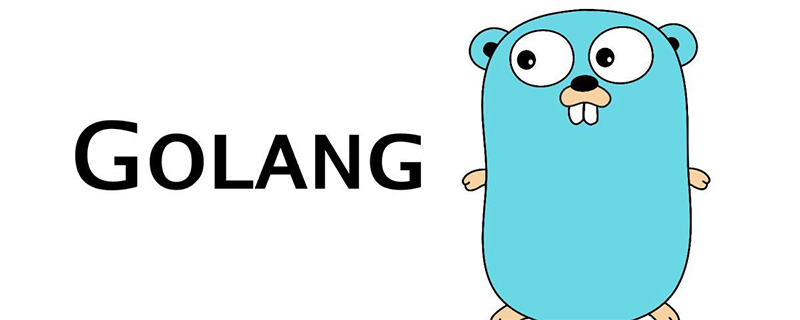golang中sort包如何实现
16lz
2021-01-22

sort包中实现了3种基本的排序算法:插入排序.快排和堆排序.和其他语言中一样,这三种方式都是不公开的,他们只在sort包内部使用。
所以用户在使用sort包进行排序时无需考虑使用那种排序方式,sort.Interface定义的三个方法:获取数据集合长度的Len()方法、比较两个元素大小的Less()方法和交换两个元素位置的Swap()方法,就可以顺利对数据集合进行排序。sort包会根据实际数据自动选择高效的排序算法。
type Interface interface { // 返回要排序的数据长度 Len() int //比较下标为i和j对应的数据大小,可自己控制升序和降序 Less(i, j int) bool // 交换下标为i,j对应的数据 Swap(i, j int)}任何实现了 sort.Interface 的类型(一般为集合),均可使用该包中的方法进行排序。这些方法要求集合内列出元素的索引为整数。
这里我直接用源码来讲解实现:
1、源码中的例子:
type Person struct { Name string Age int}type ByAge []Person//实现了sort接口中的三个方法,则可以使用排序方法了func (a ByAge) Len() int { return len(a) }func (a ByAge) Swap(i, j int) { a[i], a[j] = a[j], a[i] }func (a ByAge) Less(i, j int) bool { return a[i].Age < a[j].Age }func Example() { people := []Person{ {"Bob", 31}, {"John", 42}, {"Michael", 17}, {"Jenny", 26}, } fmt.Println(people) sort.Sort(ByAge(people)) //此处调用了sort包中的Sort()方法,我们看一下这个方法 fmt.Println(people) // Output: // [Bob: 31 John: 42 Michael: 17 Jenny: 26] // [Michael: 17 Jenny: 26 Bob: 31 John: 42]}2、Sort(data Interface)方法
//sort包只提供了这一个公开的公使用的排序方法,func Sort(data Interface) { // Switch to heapsort if depth of 2*ceil(lg(n+1)) is reached. //如果元素深度达到2*ceil(lg(n+1))则选用堆排序 n := data.Len() maxDepth := 0 for i := n; i > 0; i >>= 1 { maxDepth++ } maxDepth *= 2 quickSort(data, 0, n, maxDepth)}//快速排序//它这里会自动选择是用堆排序还是插入排序还是快速排序,快速排序就是func quickSort(data Interface, a, b, maxDepth int) { //如果切片元素少于十二个则使用希尔插入法 for b-a > 12 { // Use ShellSort for slices <= 12 elements if maxDepth == 0 { heapSort(data, a, b) //堆排序方法,a=0,b=n return } maxDepth-- mlo, mhi := doPivot(data, a, b) // Avoiding recursion on the larger subproblem guarantees // a stack depth of at most lg(b-a). if mlo-a < b-mhi { quickSort(data, a, mlo, maxDepth) a = mhi // i.e., quickSort(data, mhi, b) } else { quickSort(data, mhi, b, maxDepth) b = mlo // i.e., quickSort(data, a, mlo) } } if b-a > 1 { // Do ShellSort pass with gap 6 // It could be written in this simplified form cause b-a <= 12 for i := a + 6; i < b; i++ { if data.Less(i, i-6) { data.Swap(i, i-6) } } insertionSort(data, a, b) }}//堆排序func heapSort(data Interface, a, b int) { first := a lo := 0 hi := b - a // Build heap with greatest element at top. //构建堆结构,最大的元素的顶部,就是构建大根堆 for i := (hi - 1) / 2; i >= 0; i-- { siftDown(data, i, hi, first) } // Pop elements, largest first, into end of data. //把first插入到data的end结尾 for i := hi - 1; i >= 0; i-- { data.Swap(first, first+i) //数据交换 siftDown(data, lo, i, first) //堆重新筛选 }}// siftDown implements the heap property on data[lo, hi).// first is an offset into the array where the root of the heap lies.func siftDown(data Interface, lo, hi, first int) { //hi为数组的长度 //这里有一种做法是把跟元素给取到存下来,但是为了方法更抽象,省掉了这部,取而代之的是在swap的时候进行相互交换 root := lo //根元素的下标 for { child := 2*root + 1 //左叶子结点下标 //控制for循环介绍,这种写法更简洁,可以查看我写的堆排序的文章 if child >= hi { break } //防止数组下标越界,判断左孩子和右孩子那个大 if child+1 < hi && data.Less(first+child, first+child+1) { child++ } //判断最大的孩子和根元素之间的关系 if !data.Less(first+root, first+child) { return } //如果上面都 满足,则进行数据交换 data.Swap(first+root, first+child) root = child }}更多golang知识请关注golang教程栏目。
更多相关文章
- golang判断tcp是否断开的方法
- golang判断map中key不存在的方法
- golang判断map是否存在的方法
- golang判断文件是否存在的方法
- golang判断数组是否为空的方法
- golang使用socket中文乱码解决方法
- golang判断字符串是否为空的方法
- golang判断字符串是否数字的方法
- golang检查文件是否存在的方法
